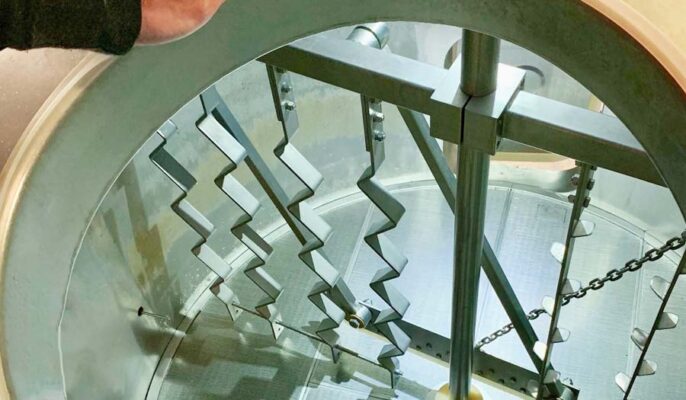In the beer brewing process, there are several pieces of equipment that are essential to creating high-quality beer. One of these pieces of equipment is the lauter tun, which plays a crucial role in the lautering process. In this article, we will explore what a lauter tun is, how it is used in brewing, and the benefits of using one.If you want to learn more, you can visit the micet group.
What is a Lauter Tun?
Lauter Tuns are key components of the brewery, vessels used to separate the wort from the solids of the mash. A lauter bucket works much like a large sieve. It usually has a slotted, perforated floor, also known as a false bottom, which holds the spent ground grain while allowing the wort to filter through the grain bed and collect in the space below; the wort then flows to the brew pot.
How is a Lauter Tun Used in Brewing?
The lauter tun is used in the lautering process, which is the process of separating the sweet wort from the spent grains. After the mashing process is complete, the mash is transferred to the lauter tun. The false bottom of the lauter tun allows the sweet wort to flow through while retaining the spent grains.
Once the sweet wort has been separated from the spent grains, it is typically transferred to a brew kettle for boiling. The spent grains can be discarded or used for other purposes, such as animal feed or compost.
The Benefits of Using a Lauter Tun
There are several benefits to using a lauter tun in the brewing process. One of the main benefits is that it allows for more efficient separation of the sweet wort from the spent grains. This results in a higher quality wort that is free from excess solids, resulting in a cleaner and more consistent flavor profile.
Another benefit of using a lauter tun is that it allows for more precise control over the lautering process. The false bottom of the lauter tun allows for better control over the flow rate of the sweet wort, which can be adjusted to suit the specific requirements of the brewing process.

Factors to Consider When Choosing a Lauter Tun
When choosing a lauter tun, there are several factors to consider.
- The first factor is the size of the lauter tun, which should be sufficient to accommodate the volume of wort produced during the brewing process.
- The second factor to consider is the design of the false bottom, which should allow for efficient separation of the sweet wort from the spent grains.
- Other factors to consider include the material of construction, the type of valves used for draining the sweet wort, and the ease of cleaning and maintenance.
Standard of Lauter Tun
304/316 stainless steel construction including all non-product contact and structural steel
- Product contact material polishing, internal weld polishing
- Designed with the enough freeboard above the most working volume
- Sized to meet your gravity requirements
- Glass-covered manhole
- Low chlorine ceramic blanket insulation
- welded 304 stainless steel outer sheath
- Rotating spray ball to clean container
- Easy removal of dross
- distributed wort collection
- Removable grinding screen designed to achieve your desired sharpness to reduce total resonance time in filter bucket
Advantages of Lauter Tun
- Maintain precise temperature
- Integrated clean-in-place (CIP) system for quick and easy cleaning
- Agitates grain and directs airflow to efficient laser-welded steam jacket for optimal heat transfer
- Efficient and quick removal of lees from vessels after brewing operations
Conclusion
In conclusion, the lauter tun is an essential piece of equipment in the beer brewing process. Its purpose is to separate the sweet wort from the spent grains, resulting in a higher quality wort that is free from excess solids.
When choosing a lauter tun, breweries should consider factors such as size, design, and ease of maintenance to ensure that they select the best option for their specific needs. By using a lauter tun, breweries can produce high-quality beer that is consistent in flavor and quality.




